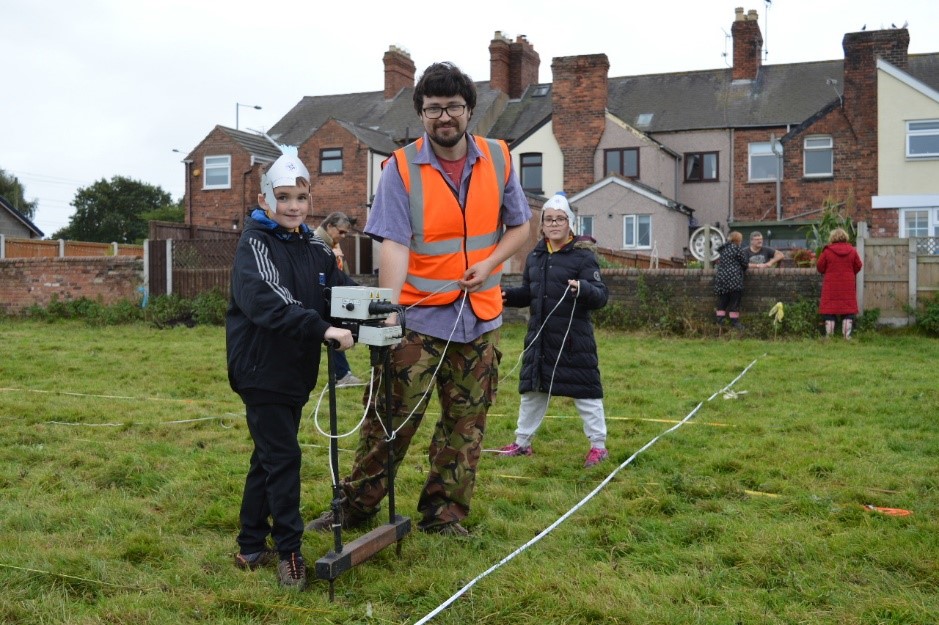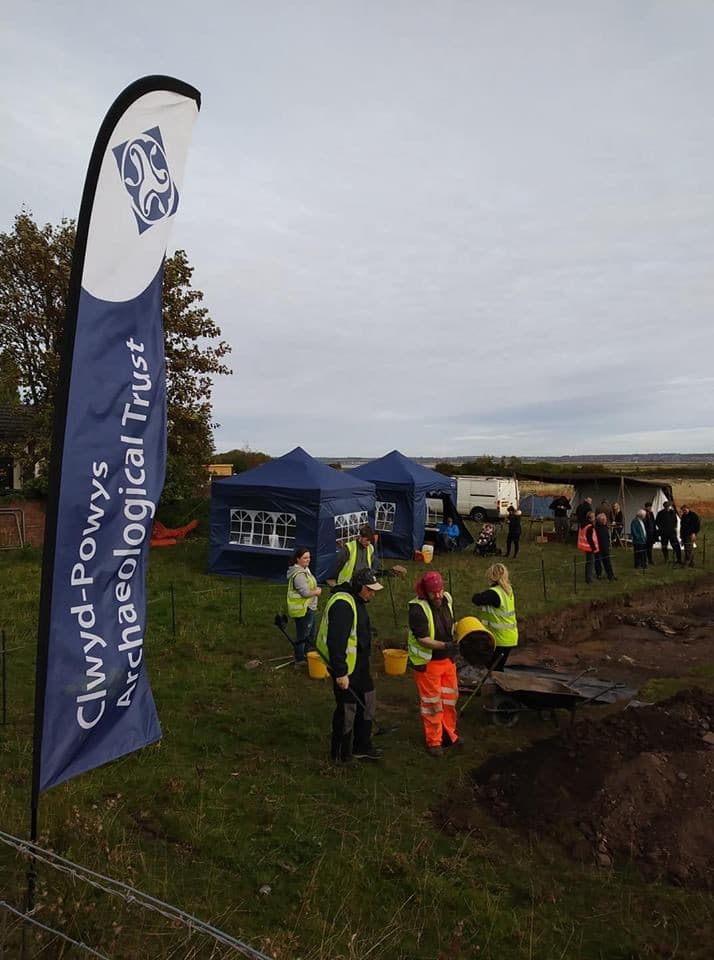PENTRE FFWRNDAN
In 2016-17 the Clwyd-Powys Archaeological Trust conducted a review of existing data for Roman activity along the Deeside coastal strip, with funding from Cadw. This confirmed a main focus of activity in the Pentre Ffwrndan area.
A community-based project was then developed in 2017-18, again with Cadw funding, aiming to engage local residents, schools and youth organisations through their direct participation in a weekend of Roman themed activities, displays and field investigation, promoting a ‘Big Dig’ to be undertaken by the local community with coordination and professional guidance by CPAT staff. Consequently the project generated considerable public visitor interest and in addition engaged with over 200 adults and children from numerous schools and organisations.
The investigative elements of the project, undertaken over a three day period 7 – 9th October 2017, also included volunteer participation with geophysical survey and small-scale excavation on a section of a presumed Roman road north of Chester Road, which was first identified in 1993. The excavation provided an ideal opportunity for volunteers to get involved with archaeology, and an excellent training opportunity for the local students that came along. The success of this was demonstrated by the positive feedback and by the numbers that have since volunteered for other CPAT outreach projects.

A community excavation
During the 2017 excavations, volunteers participated in excavations, including students from Flint High School, one from CADVAS, one from U3A, students from Liverpool University and Chester University, three metal detectorists who volunteered to participate in surveying the site, six members of the Marches YAC, and several members of the public.

Returning in 2018
Following the success of the 2017 dig, which welcomed visits from over 200 adults and children from the local area, schools, clubs and societies, in 2018 CPAT returned to the site to investigate further areas for evidence of Roman occupation.
The community excavation originally focused on investigating a section of the Roman road between Segontium and Deva adjacent to a short section which was revealed during a watching brief in 2007, but due to modern services and sewage works, this was not accessible – so the trench moved to the south, and instead uncovered a complex multiphase building with workshop and habitation layers from 1st to 4th century AD.
For 2018 the excavation was over ten days, staffed by a crew of volunteers and students from the University of Chester. There was a public open day and a series of school open days and workshops, including re-enacment of Roman metalworking, helping the volunteers to seive the spoil heap, and getting hands on with geophysics in the field.

